
Local History
July 30, 2023
Hello again,
Well, last week of July and still stuck in the 90s. And, for once, we didn't have a single night that made it back down into the 50s...all 60 and up. We did get some thunderstorms one night that pounded us for a good hour or more, but nothing else all week. Our much anticipated monsoon season seems to be petering out right before our eyes. So, what to do with all this heat? I, for one, have been spending my time with my nose stuck in a book much more often than usual and have been chasing down some amazing leads that have just been blowing my mind. First and foremost, I stumbled upon a book about a woman's remembrances of her youth in the mid-1800s when her huge Hispanic family would leave Las Vegas, NM with anywhere between 20 and 30 ox-driven wagons to go all the way to Amarillo to hunt buffalo every October. Apparently, those big, shaggy beasts wandered all the way from the Canadian border to the Rio Grande all year long and always ended up around Amarillo in October. So, the whole clan would go out to hunt for a few weeks, taking as many buffalo as possible, and then stay on to cut up each and every square inch of the animals for food and other supplies, before trucking it all back to Las Vegas. By the time they were heading back home, they were able to actually bring some freshly-killed meat along with them that was kept fresh because of the harshly cold temperatures that would descend upon the plains by November. These folks only had single-shot muskets that weren't exactly suited for taking down these animals, so, instead, they learned from the Comanche and fashioned long lances made out of steel to take down one buffalo at a time, always striking the left side of the animal, right behind the shoulder, to make sure that the lance would instantly pierce its heart. Much later after the Civil War, when the Anglos made it out this far with their repeating rifles, the hunting of buffalo became a wholesale and mechanical affair, with a multitude of animals being taken all at once from afar. But, up until then, you had to literally ride right up to one on a galloping steed and then stick a huge skewer in it side. The woman who wrote this memoir(Fabiola Cabeza de Baca: We Fed Them Cactus: 1954) became an Agricultural Extension Agent after going to college and coming back to Las Vegas. Her thirty year career in that field led to the writing of many gardening and cookbooks and the learning of some Pueblo Indian languages along the way! She cherished native ways and the traditional preparation of foods and preserved all of that knowledge through her many books.
One tidbit that I gleaned from her book was that San Miguel del Bado, the Spanish land grant that is closest to where we live, was settled by Indians from Tlaxcala in Mexico. These were the Indians in central Mexico that the Spanish allied themselves with upon their arrival in the early 1500s who subsequently aided them in defeating and conquering the Aztecs. From that point on, the Tlaxcaltecas were given all rights and privileges that every other Spaniard had and stuck with them as allies for the next few centuries in Mexican history. Each time that the Spanish would push north in pursuit of more territory, the Tlaxcaltecas would be the main part of the vanguard that would deploy and settle newly-won areas. They did this first with the Chichimecas in northern Mexico in the mid-1500s, and then used that area as a springboard to push all the way up into the extreme north of the empire into what is now New Mexico. The Tlaxcaltecas were used as scouts and soldiers by the Spanish in their initial pushes into New Mexico in 1540 and 1598. After the Pueblo Indians threw all of the Spanish out of New Mexico in 1680, they finally returned after a twelve year absence in 1693, again with the Tlaxcaltecas, and this time started including them in land grants east of the central chain of mountains, along the Pecos River, to serve as a barrier to the Comanche out on the plains to the east, who, as of the 1700s had mastered the horse and turned it into a serious weapon of mass destruction. Out of these settlements along the Pecos like Las Colonias, San Jose, San Miguel and Anton Chico came the Comancheros who alone were brave enough to trade with the Comanche and also the Ciboleros, who still went out on the plains to hunt the buffalo(cibolo). Oh, the tales that this valley could tell! Old Aztec words used for almost everything instead of the proper Spanish words. Older traditions that seem out of context unless seen as derived from Mesoamerica!
So, after such ponderings of the past, here are some pictures that are from this week. First up, having caught Erin on her way up to the house to clean on a day that reached 96, I couldn't resist a shot...I was threatened with death and dismemberment, but tried to play around with the photo a little so as not to erase myself. Then, three cat shots: the first two of Daisy napping on the book that I was reading; and, also, some of the crew hanging out on the front stoop...the tiger turning 15 and Chelly and her babies, barely 2 and 1, respectively. Next, a series of eight shots of all the birds that we get out here: first, a little guy's silhouette on top of a shepherd's hook; then, three shots of my first roadrunner ever...you have to really look closely!; and, four more shots of all the hummingbirds attacking our nearly dozen feeders for them! And, finally, four shots of the old church in San Jose: the first two from 'downtown' in front of the post office; the other two from up on our ranch road, overlooking the town from the other side of the river.
Take care.

Crazy Cleaning Lady
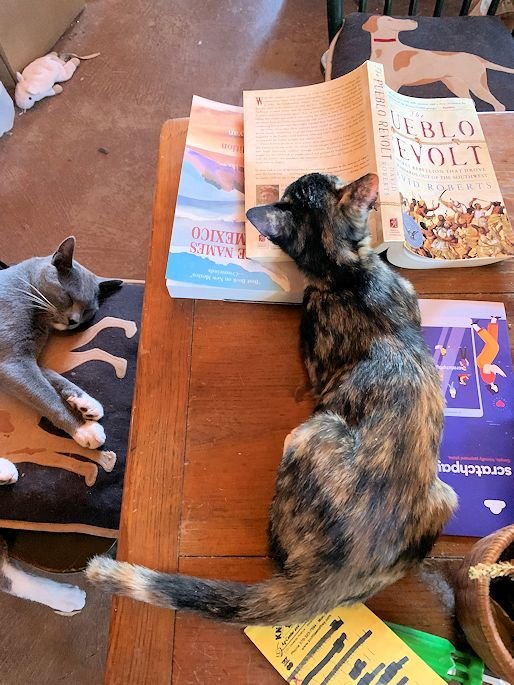
Cat Nap I
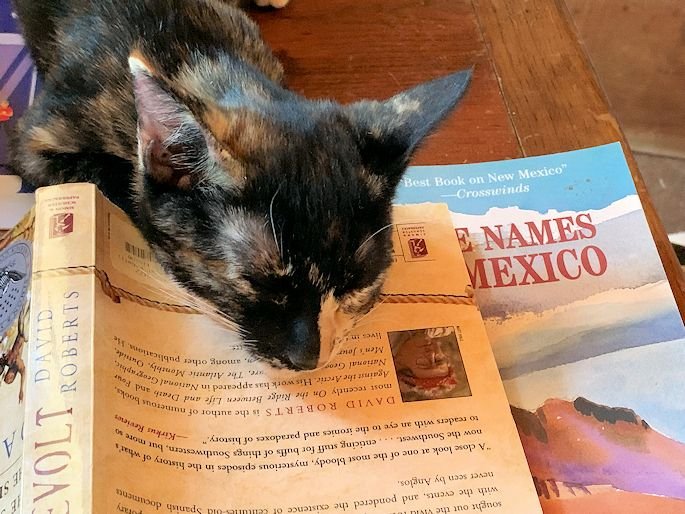
Cat Nap II

Long, Catty Summer
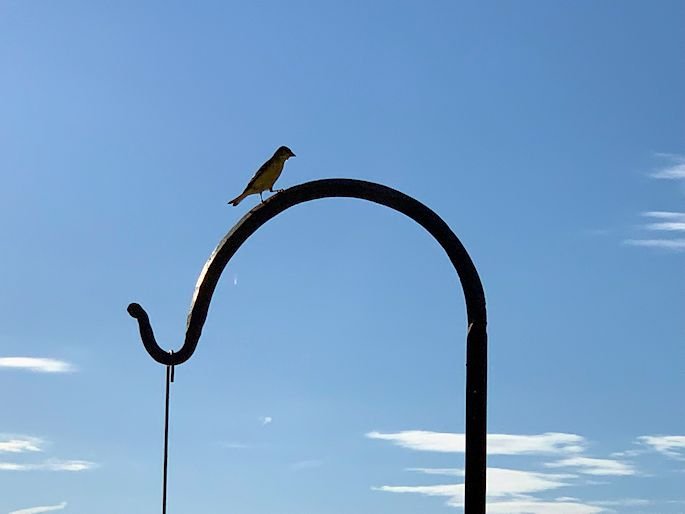
Backlit Birdie

Can You Find the Hidden Roadrunner?
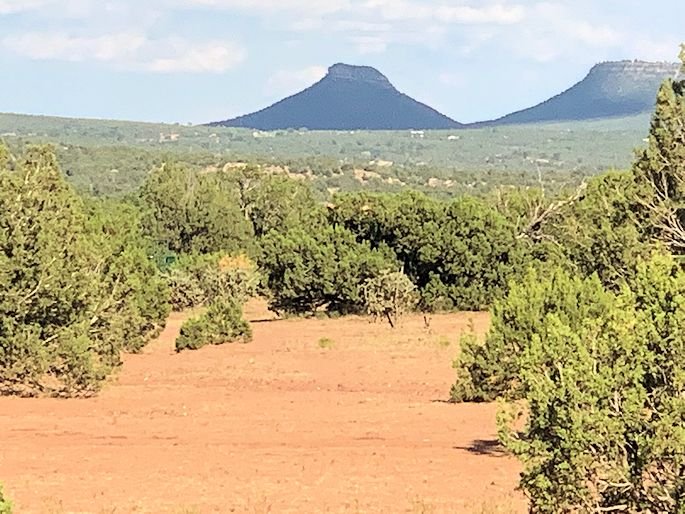
My First Roadrunner I
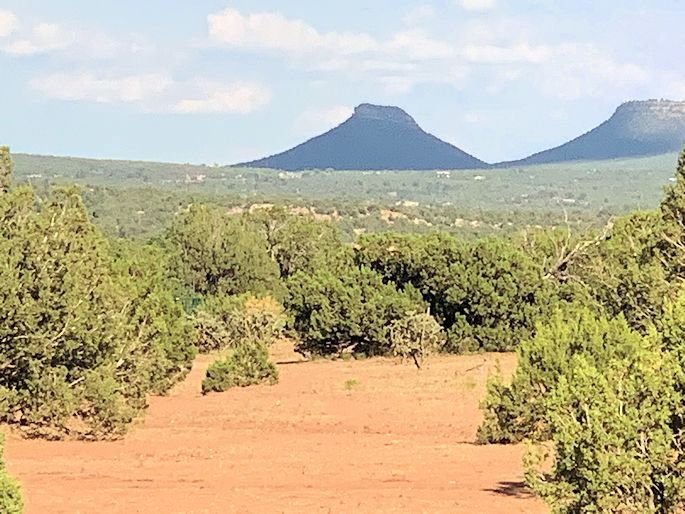
My First Roadrunner II
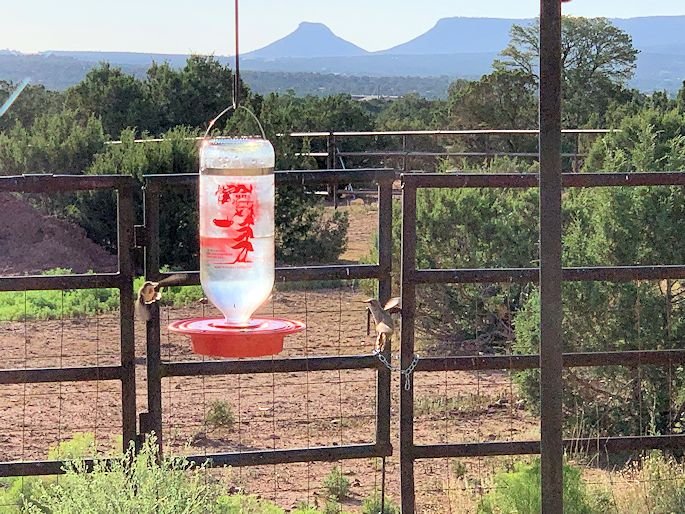
Rocky Mountain Hummingbirds I

Rocky Mountain Hummingbirds II

Rocky Mountain Hummingbirds III

Rocky Mountain Hummingbirds IV

San Jose Church I
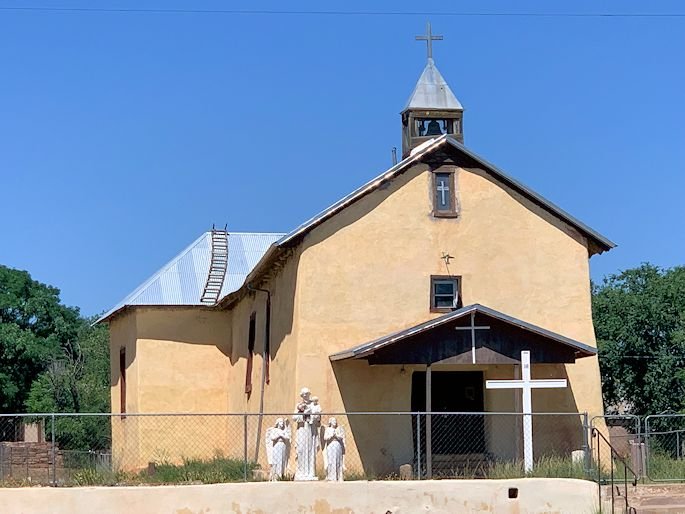
San Jose Church II

San Jose Church III

San Jose Church IV